Introduction of Bamboo | Advantages & Disadvantages of Bamboo | Bamboo Uses in Construction | Properties of Bamboo as a Construction Material | Bamboo Architecture
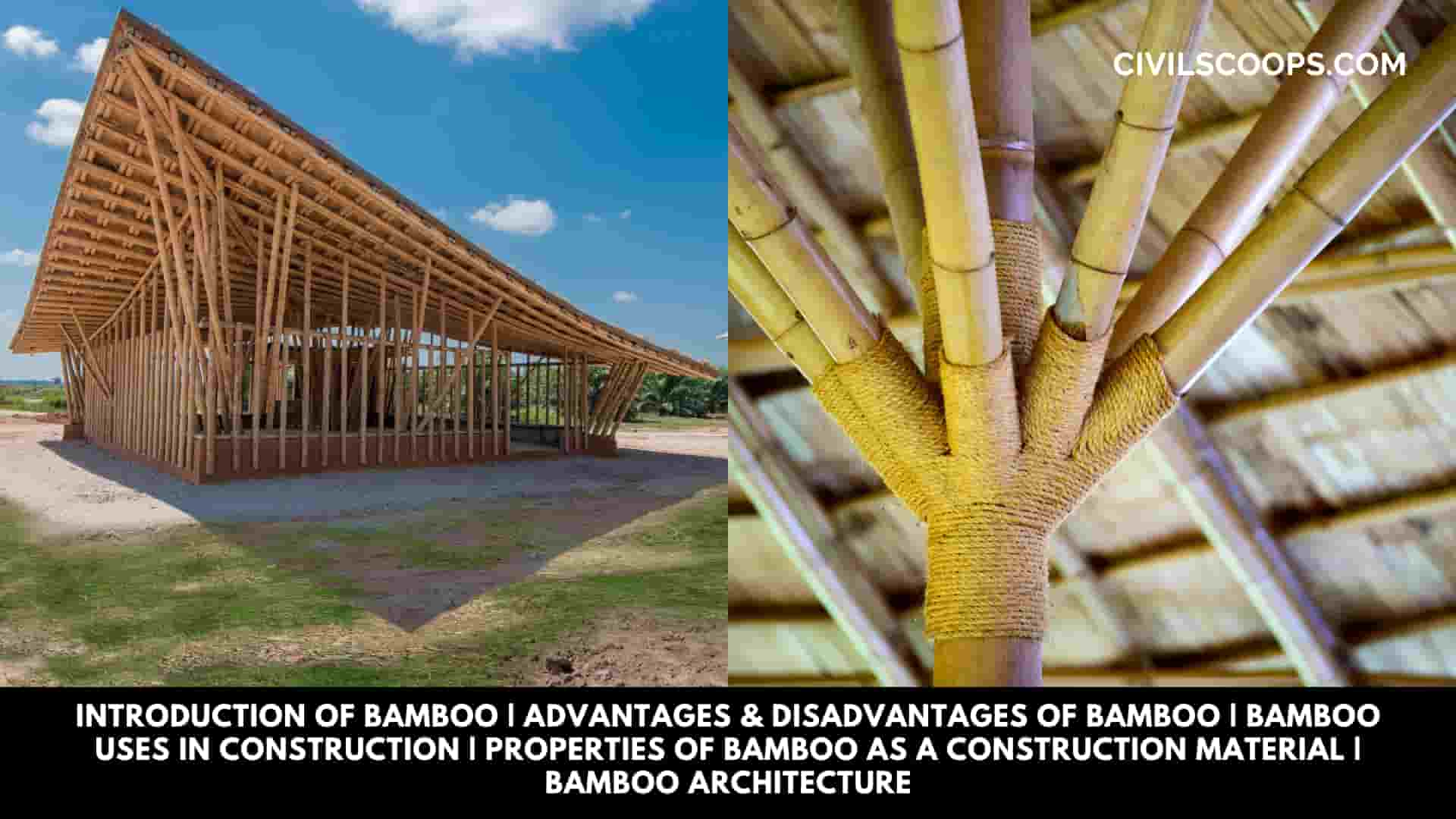
Table of Contents
Introduction of Bamboo
- Bamboo is one of the oldest and traditional construction materials used in different construction activities.
- The bamboos strength it is more as compared to other construction materials. Bamboo as a building material has greater compressive strength and it is lightweight so that it is widely used as a construction material.
- In this article, you will get to know about the uses of bamboo as a construction material and different properties of bamboo.
- The demand for timber is increasing day by day all over the world. But due to short supply of timber, bamboo is suitably used as a replacement for the construction material. Bamboo is also recently started using different types of designer homes.
- Bamboo is widely used in the construction industry for various purposes such as scaffolding construction of bridges and structures etc.
- Bamboo defines as a tall tropical plant with hard and hollow stems. Bamboo is a natural product which is widely used in the construction of partition walls floorings and ceiling panels and for roofing.
- Bamboo is one of the fastest-growing plants in all over the world. Bamboo is a renewable resource that can be cultivated in different types of soil.
- Bamboo has referred to mostly in earthquake-prone regions due to its elastic properties.
- Bamboo is widely used for the construction of partition walls and beams which are the main structural elements of any structure.
- Bamboo is the best option for the roofing material and widely used by the people in the construction of structures especially where bamboo is in abundance.
- The bamboo roof is very popular and widely used in the construction of homes which gives aesthetical look to the roof of the home.
- Bamboo has a natural surface which is smooth and clean and very attractive and does not require painting. That’s why it is very cost-effective to use bamboo as a construction material.
- Structural bamboo is used for the construction of various structural elements such as beam and columns etc. Bamboo has a high load-bearing capacity so that it is widely used in different structural elements.
- Bamboo is ancient construction material and widely used in different countries for the construction because of its high compressive strength and tensile strength.
- Because of the circular and hollow section of the bamboo it is the very lightweight construction material which is very easy to handle and transport.
- Bamboo can be used for both permanent as well as temporary construction of different types of structures.
Also Read: What Is Superstructures | Difference Between Load-Bearing and Framed Structures
Advantages of Bamboo
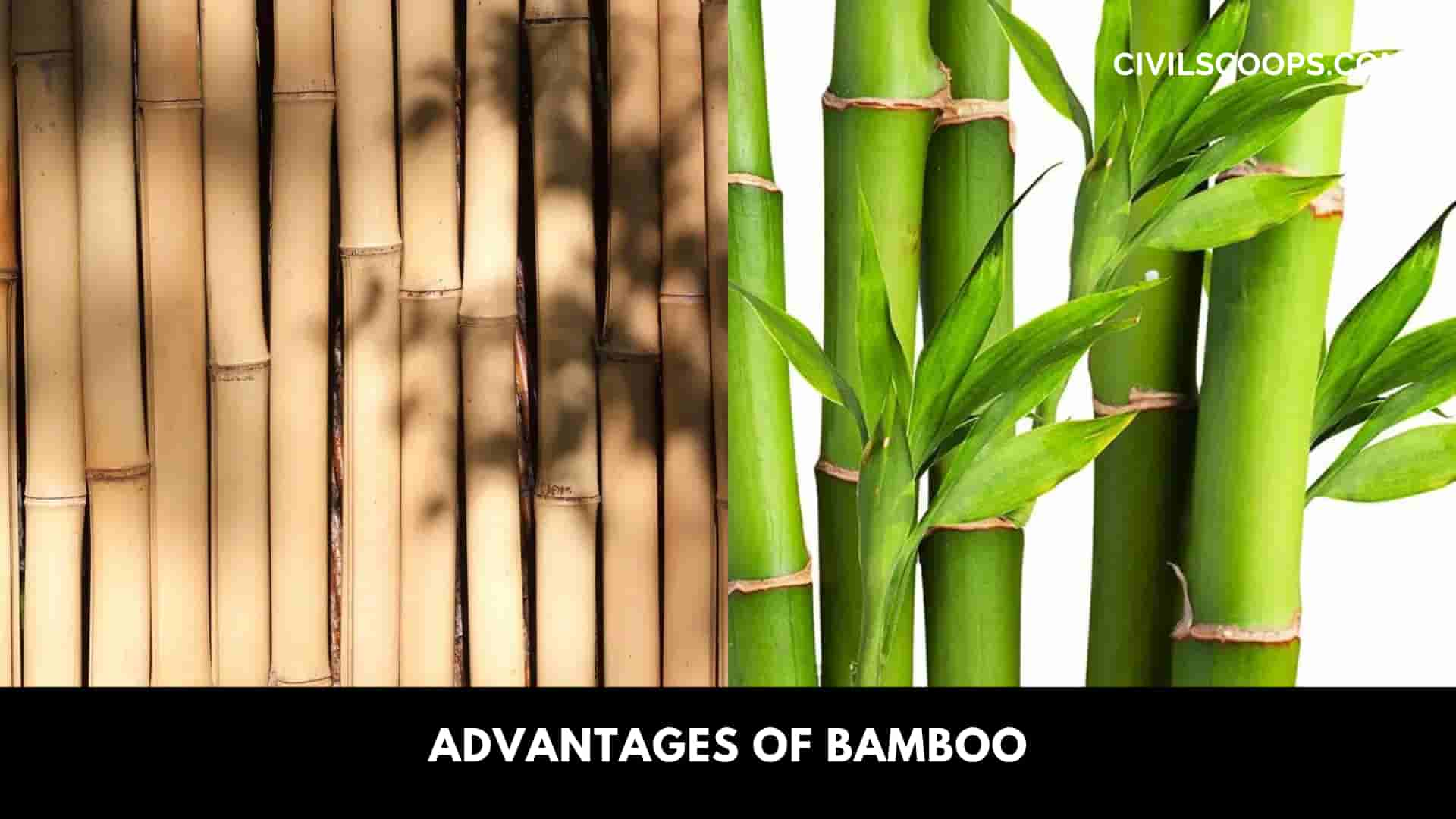
Bamboo has various advantages as a construction material which are as follows
- Bamboo has high tensile strength as compared to Steel because of its fibres runs axially.
- Bamboo has good elastic property so that it is widely used in the earthquake-prone areas.
- Bamboo has high fire resistance and it can withstand up to 4000 degree Celsius.
- Bamboo economical and easy to use as compared to another type of construction material.
- Bamboo is easier for transportation and construction.
- Bamboo is lightweight material as compared to other construction material.
- Bamboo is an environment friendly construction material and does not cause pollution.
- Bamboo is more durable as compared to other construction materials.
Disadvantages of Bamboo

The bamboo also has some disadvantages which are as follows
- Bamboo shrinks much greater as compared to other types of materials.
- If the bamboo is not sufficiently treated it may undergo the fungus attack or attacks caused by insects.
- There may be a problem of swelling and shrinkage of bamboo in the concrete.
- Bamboo may absorb water during the casting and curing of the concrete.
Bamboo Uses in Construction

There are various uses for bamboo in various construction of buildings.
- Bamboo is also used as a roofing material which offers protection against extreme weather conditions.
- Bamboo is also used in the construction of different types of partition walls.
- Bamboo is also used as a flooring material.
- Bamboo has a high load-bearing capacity due to which it is used as a scaffolding material.
- Bamboo is also used as a construction material in the earthquake-prone areas due to its high receivable strength to absorb shocks.
- Bamboo is also used in the construction of buildings such as in flooring roofing and ceiling panels.
- Bamboo can be also used as a reinforcement in the different types of structural members. Hence, it is also known as structural bamboo.
Properties of Bamboo as a Construction Material
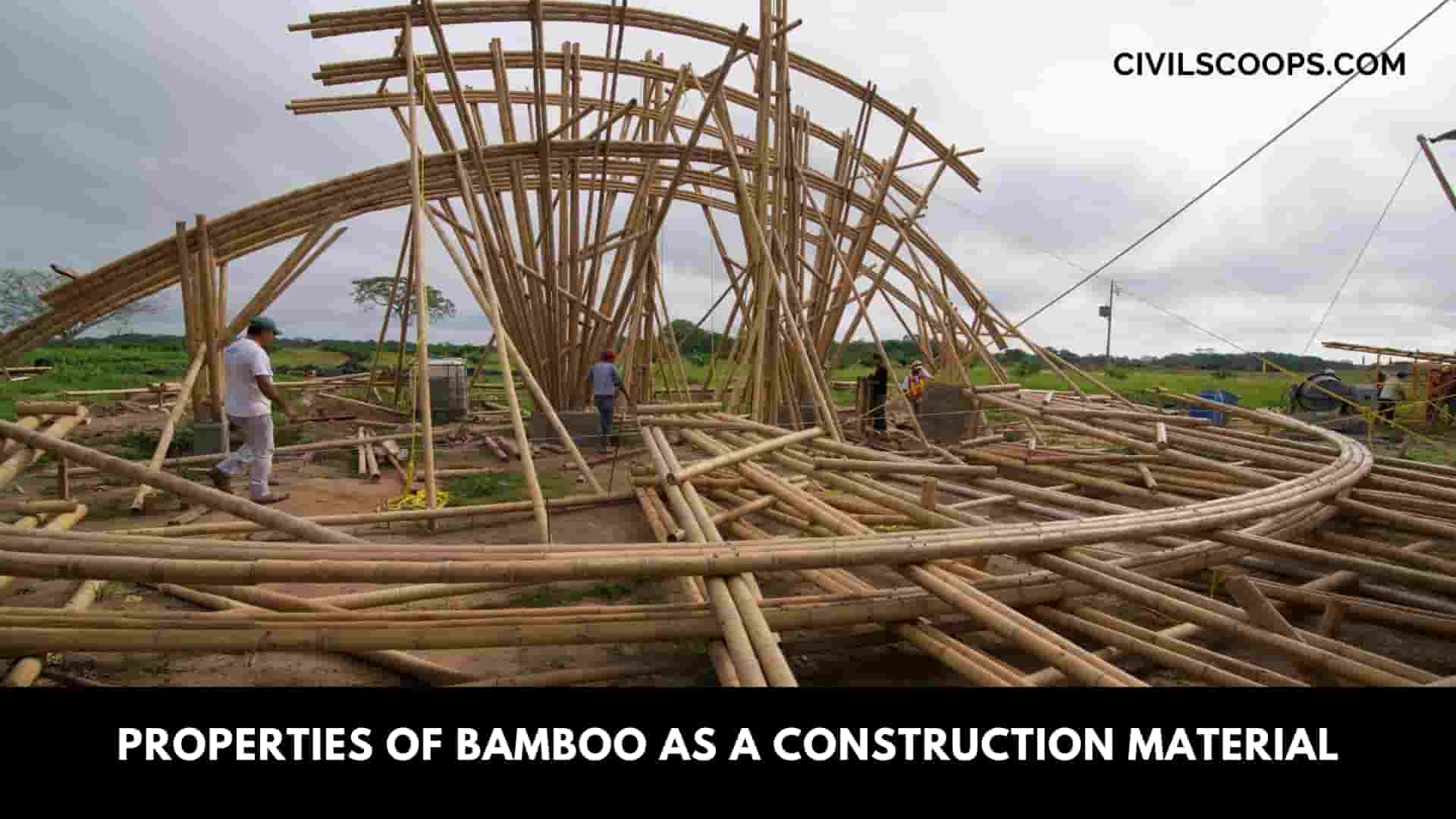
The bamboo has various properties as a construction material which are as follows
- Compressive Strength of Bamboo
- Tensile Strength of Bamboo
- Elastic Modulus of Bamboo
- Shrinkage in the Bamboo
- Fire Resistance
#1. Compressive Strength of Bamboo

The bamboo has greater compressive strength. The slimmer tubes of bamboo have greater compressive strength value.
#2. Tensile Strength of Bamboo
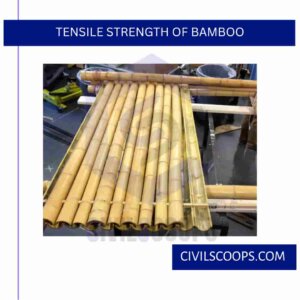
Bamboo has greater tensile strength as compared to the compressive strength. The fibres which are present in the bamboo runs actually which has highly elastic and has high tensile strength.
The tensile strength of these fibres is more as compared to the steel.
#3. Elastic Modulus of Bamboo

Elastic modulus of the bamboo is one of the most important properties of the bamboo. More elastic modulus higher the quality of the bamboo.
The accumulation of the strong fibers in the tube wall of the bamboo affects the elastic modulus.
#4. Shrinkage in the Bamboo

Bamboo shrinks more as compared to wood and Timber when it losses water. That’s why it is very necessary that proper measures should be taken to prevent water loss when bamboo used as a construction material.
#5. Fire Resistance
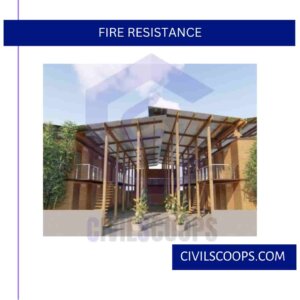
Bamboo has good heat preservation and heat insulation property.
Bamboo Architecture
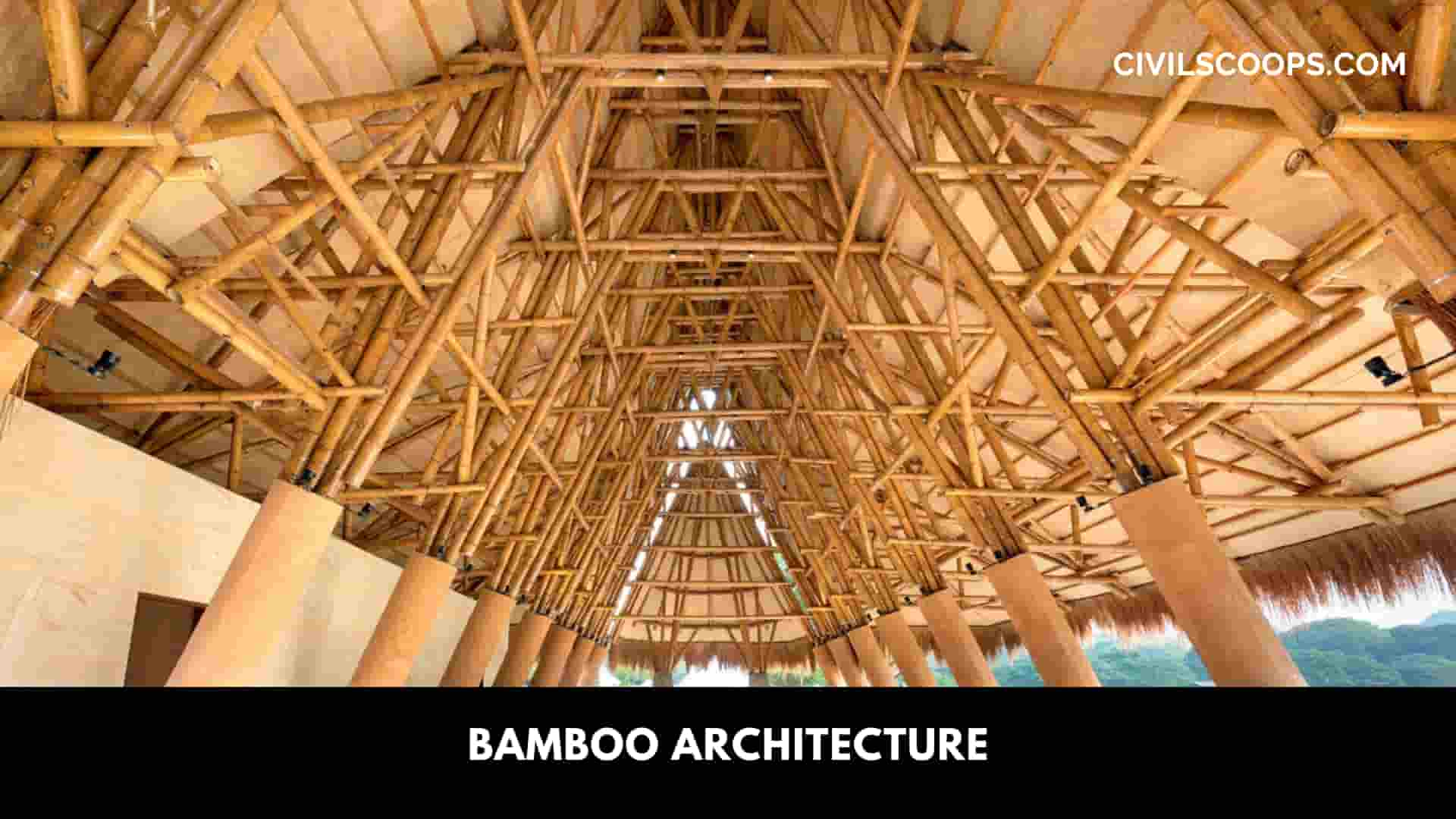
- Bamboo is very popular and widely used material in bamboo architecture and design.
- Bamboo has strong adaptability e in the strength as well as in thickness so that there are different combinations and adjustments can be done as per the architectural principles.
- Bamboo architecture is very popular nowadays and widely used in the construction of the building.
- Bamboo can be used as an ideal construction material for the construction and the development of low carbon buildings and green building.
Also Read: Commercial Building Roof Types | What is Commercial Building Roof
Bamboo Facade

The bamboo facade is a sustainable and ecological alternative for the tropical hardwood. This is used for the solid bamboo boards for the outdoor uses.
[su_box title=”FAQ” style=”default” box_color=”#333333″ title_color=”#FFFFFF” radius=”3″ class=”” id=””]
Bamboo Uses
Bamboo has many uses, mainly in construction (flooring, roofing designing, and scaffolding), furniture, food, biofuel, fabrics, cloth, paper, pulp, charcoal, ornamental garden planting, and environmental characteristics, such as a large carbon sink and good phytoremediation option, improving soil structure and soil.
Bamboo Uses in Construction
Bamboo as a building material has high compressive strength and low weight has been one of the most used building material as support for concrete, especially in those locations where it is found in abundance. Bamboo as a building material is used for the construction of scaffolding, bridges and structures, houses.
Bamboo Construction Material
Bamboo, like wood, is a natural composite material with a high strength-to-weight ratio useful for structures. Bamboo’s strength-to-weight ratio is similar to timber, and its strength is generally similar to a strong softwood or hardwood timber.
Bamboo Architecture
Bamboo architecture refers to the use of bamboo as a primary building material or as a significant component in architectural design and construction. Bamboo has been utilized as a construction material for centuries, particularly in regions where it is abundant, such as Asia, Africa, and South America.
Uses for Bamboo
Bamboo is used as a primary building material in construction, ranging from small-scale structures like huts and sheds to large-scale buildings. It can be used for walls, roofs, floors, beams, columns, and even entire houses. Bamboo’s strength, flexibility, and sustainability make it a popular choice for eco-friendly construction.
Bamboo Strength
Unlike wood, bamboo has no rays or knots, allowing it to withstand more stress throughout the length of each stalk. Bamboo can take up to 52,000 pounds of pressure per square inch, which is pretty amazing for a type of grass.
Bamboo Facade
The façade is the business card of every building and the design and material used is very decisive for the appearance. Bamboo is a durable material that is suitable as façade covering, especially if a natural look is desired.
Structural Bamboo
Bamboo has a higher tensile strength than many types of steel and a comparable strength-to-weight ratio as certain alloys of steel. It has a tensile strength ranging from 100 to 150 megapascals (MPa), which makes it a suitable material for structural applications.
Bamboo Building
Bamboo can be utilized as a building material for scaffolding, bridges, houses and buildings. Bamboo, like wood, is a natural composite material with a high strength-to-weight ratio useful for structures.
Bamboo Roof Structure
Bamboo culms can be used as rafters and beams in roof construction. The culms are typically cut to the desired length and then treated and preserved to enhance their durability. They can be joined together using traditional techniques like lashing, or modern methods such as bolts or screws.
[/su_box]
[su_note note_color=”#F2F2F2 ” text_color=”#333333″ radius=”3″ class=”” id=””]
Like this post? Share it with your friends!
Suggested Read –
- Why Hairline Cracks in Concrete | Types of Cracks in Concrete
- What Is Paint Finishes for Walls | Types of Paint Finishes | Types of Paint Finishing
- What Is Brutalist Architecture | Brutalist Design | Brutalism Architects Buildings & Houses | What Is Neo-Brutalism
- Difference Between Marble and Granite | What Is Marble and How Is It Made | What Is Granite and How Is It Made
- Functions of Foundation | Requirements of Good Foundation | Types of Foundation | Types of Shallow Foundations | Types of Deep Foundations
[/su_note]
Originally posted 2023-05-24 11:21:18.
